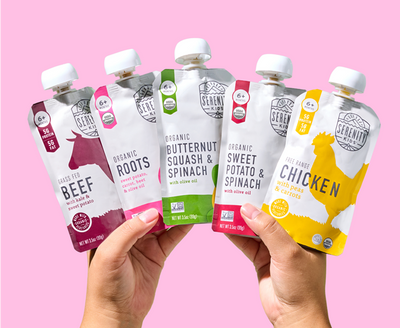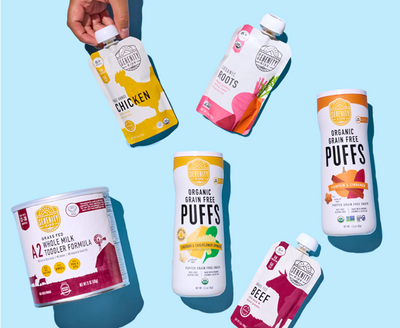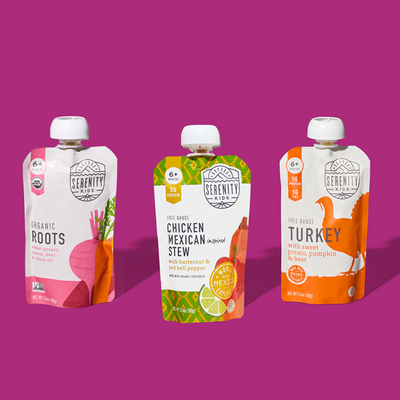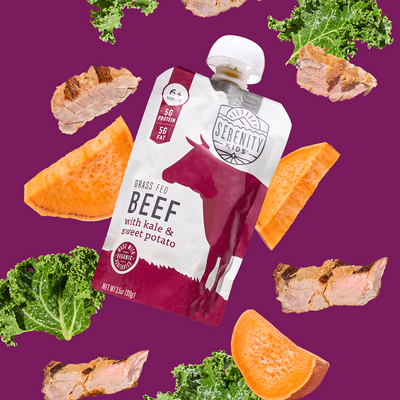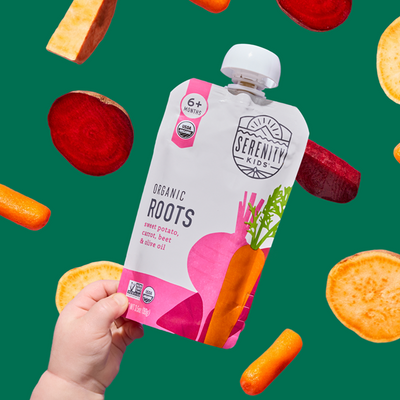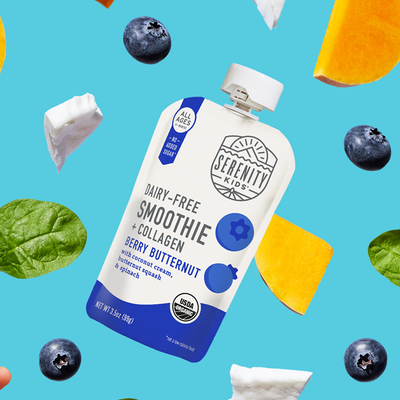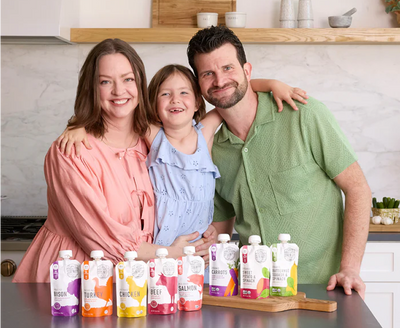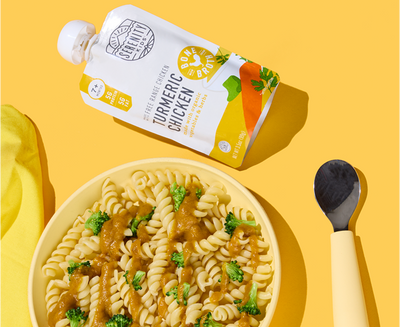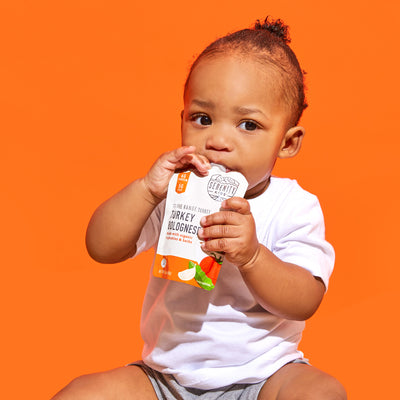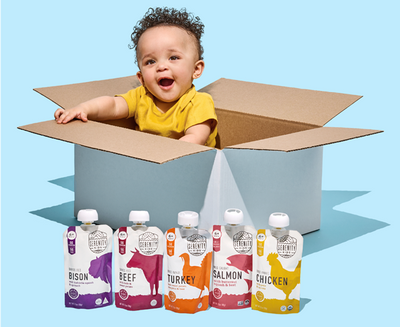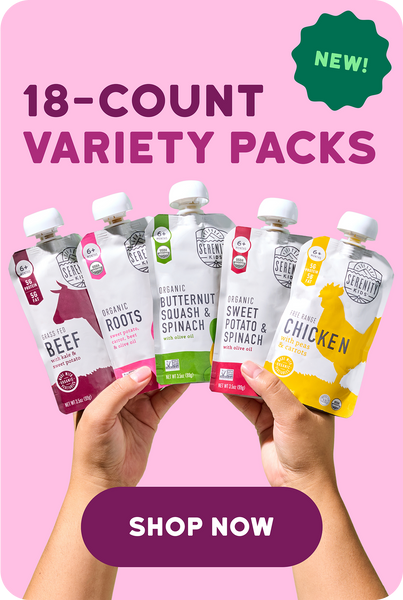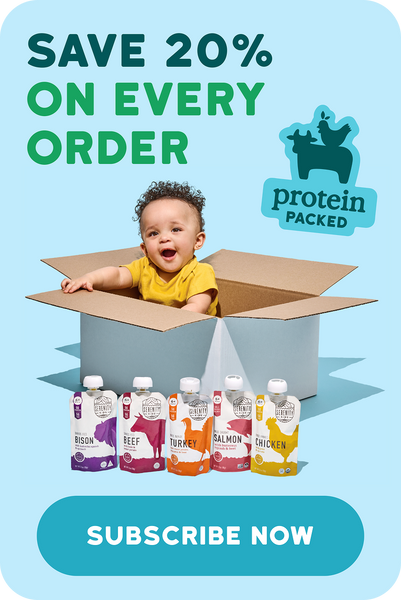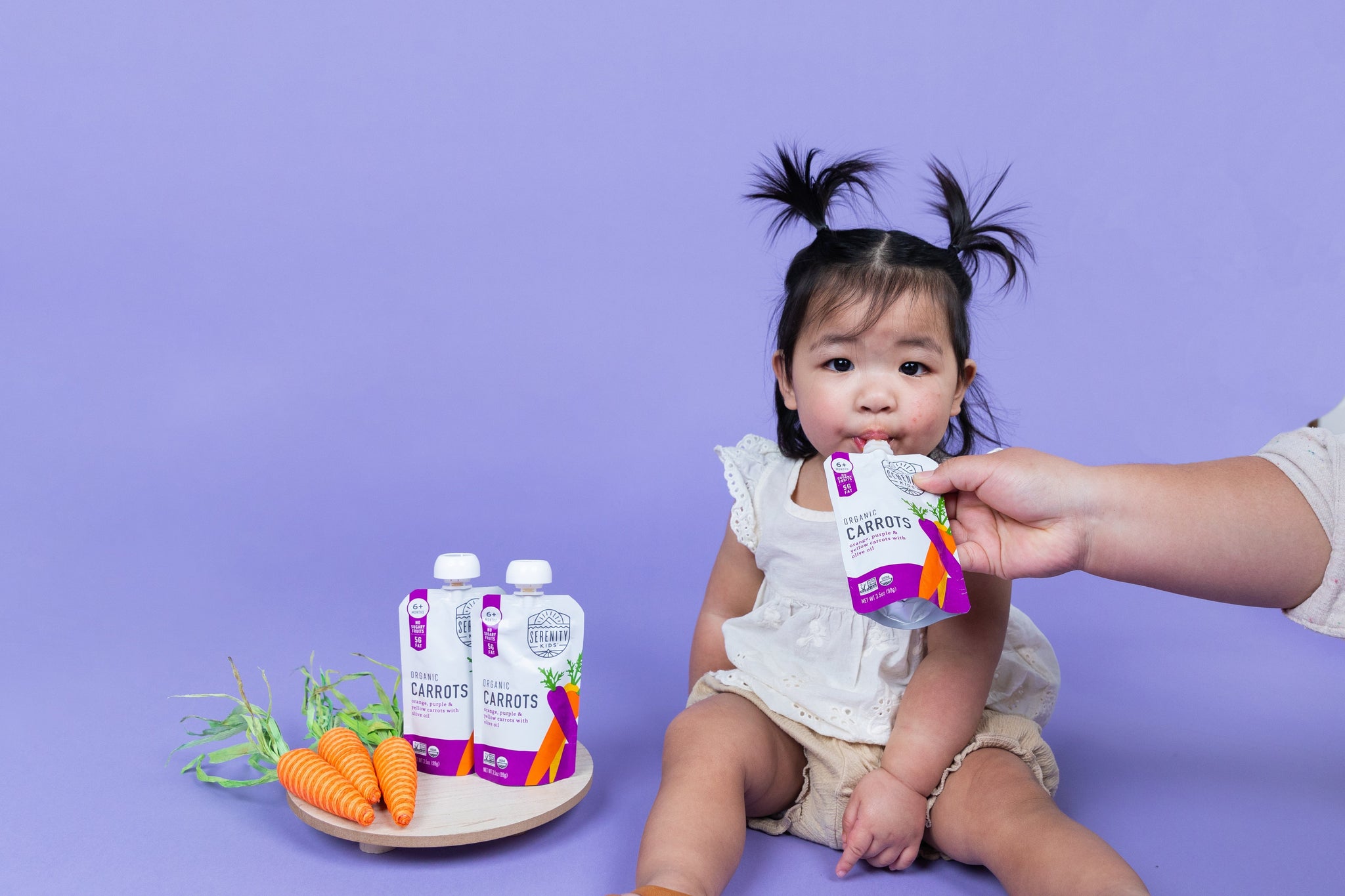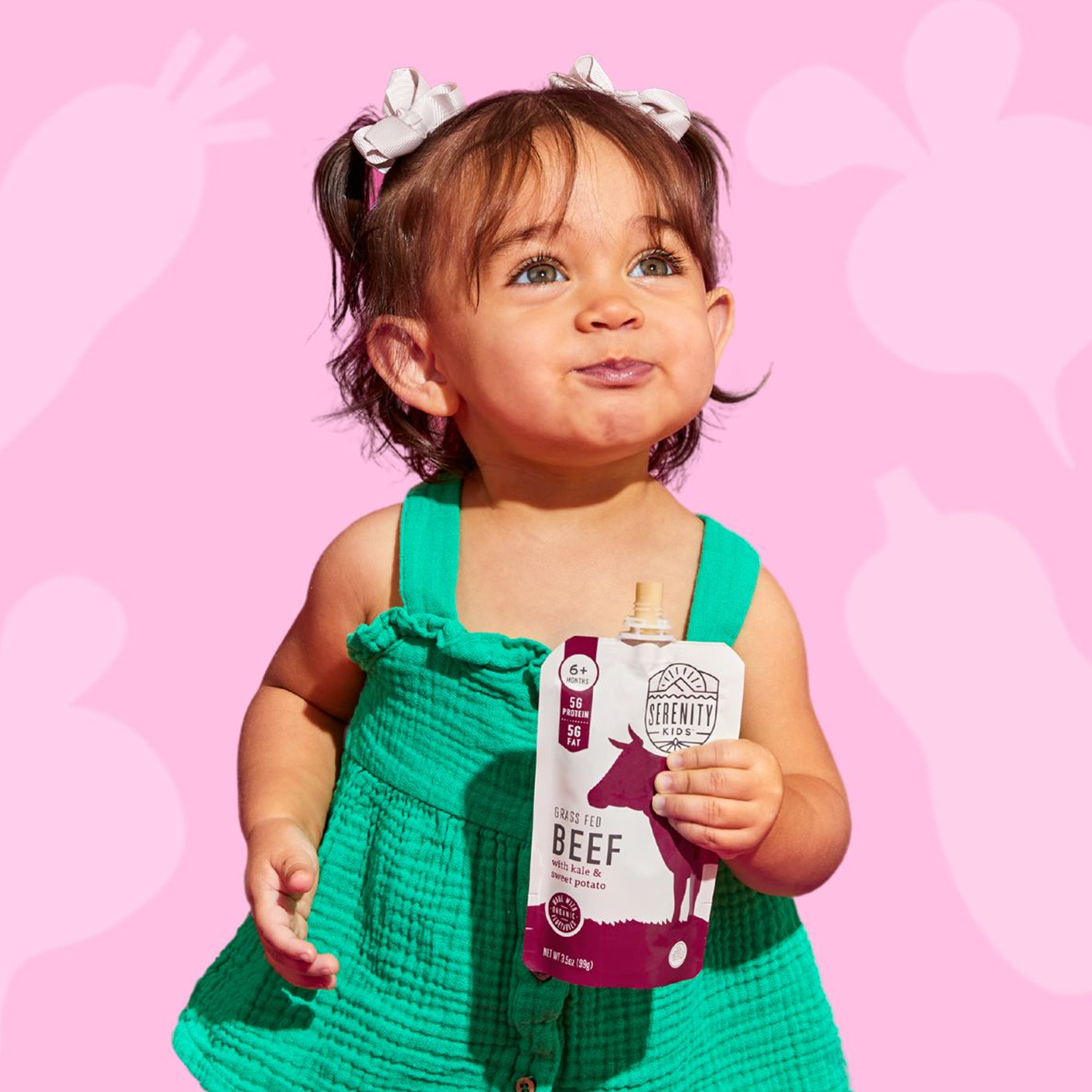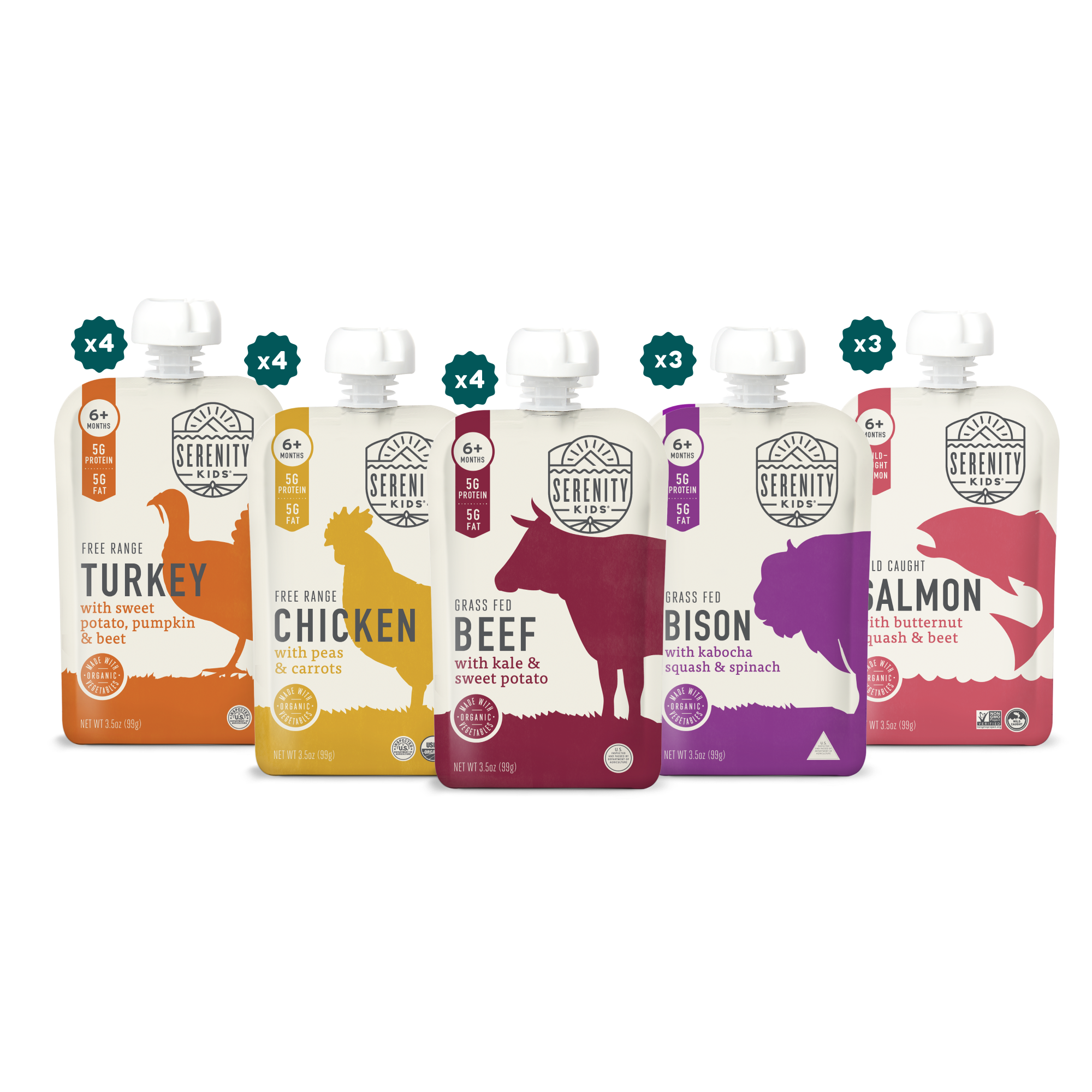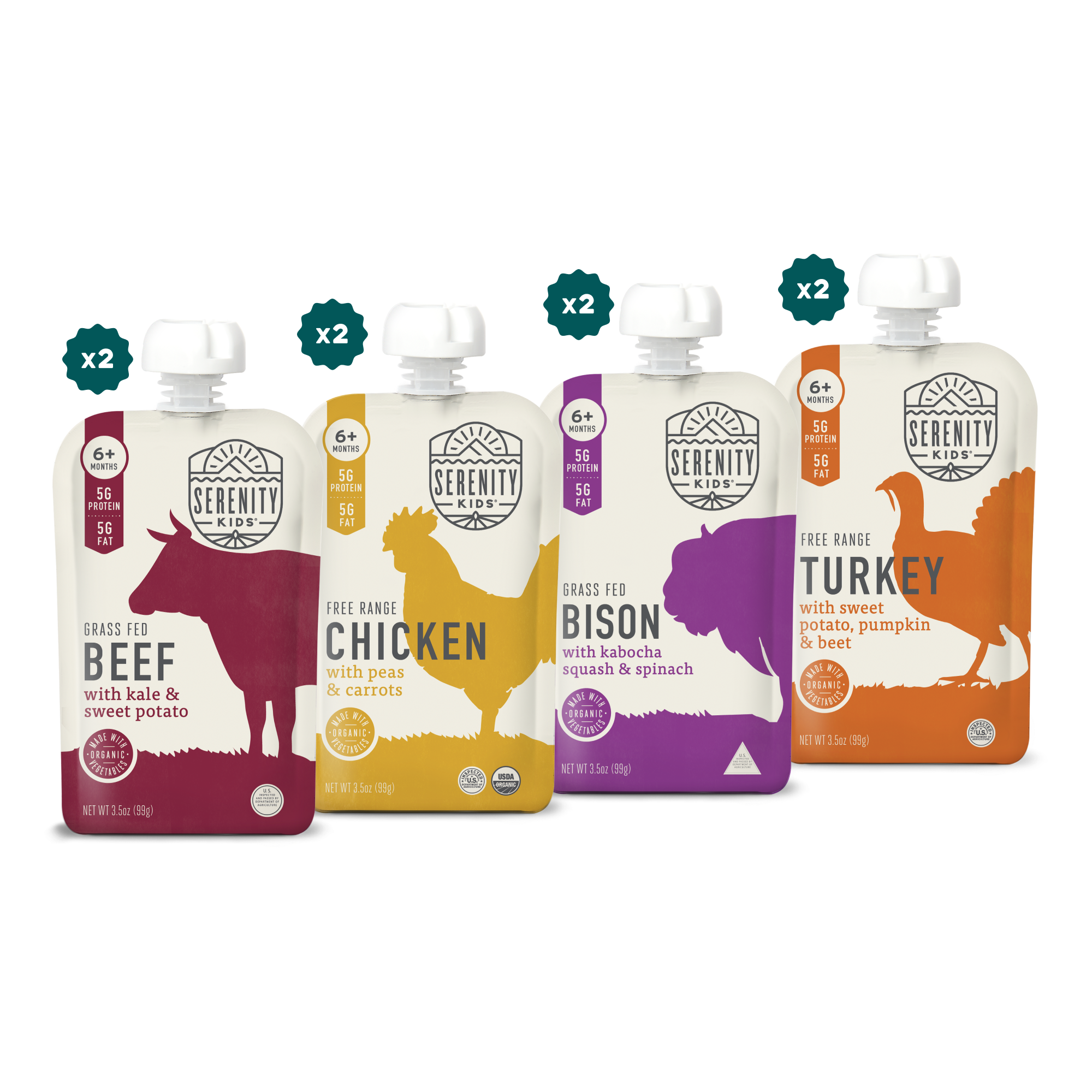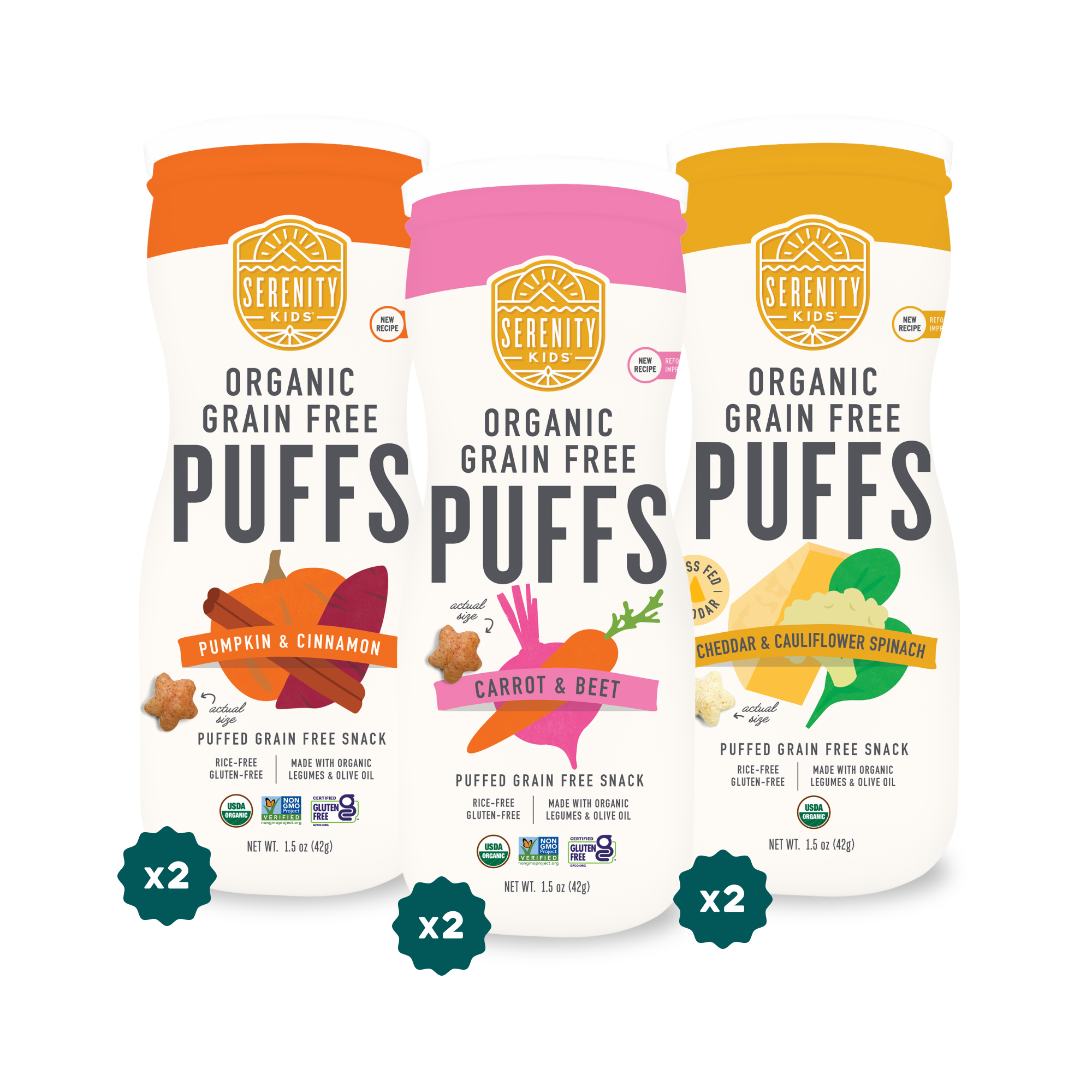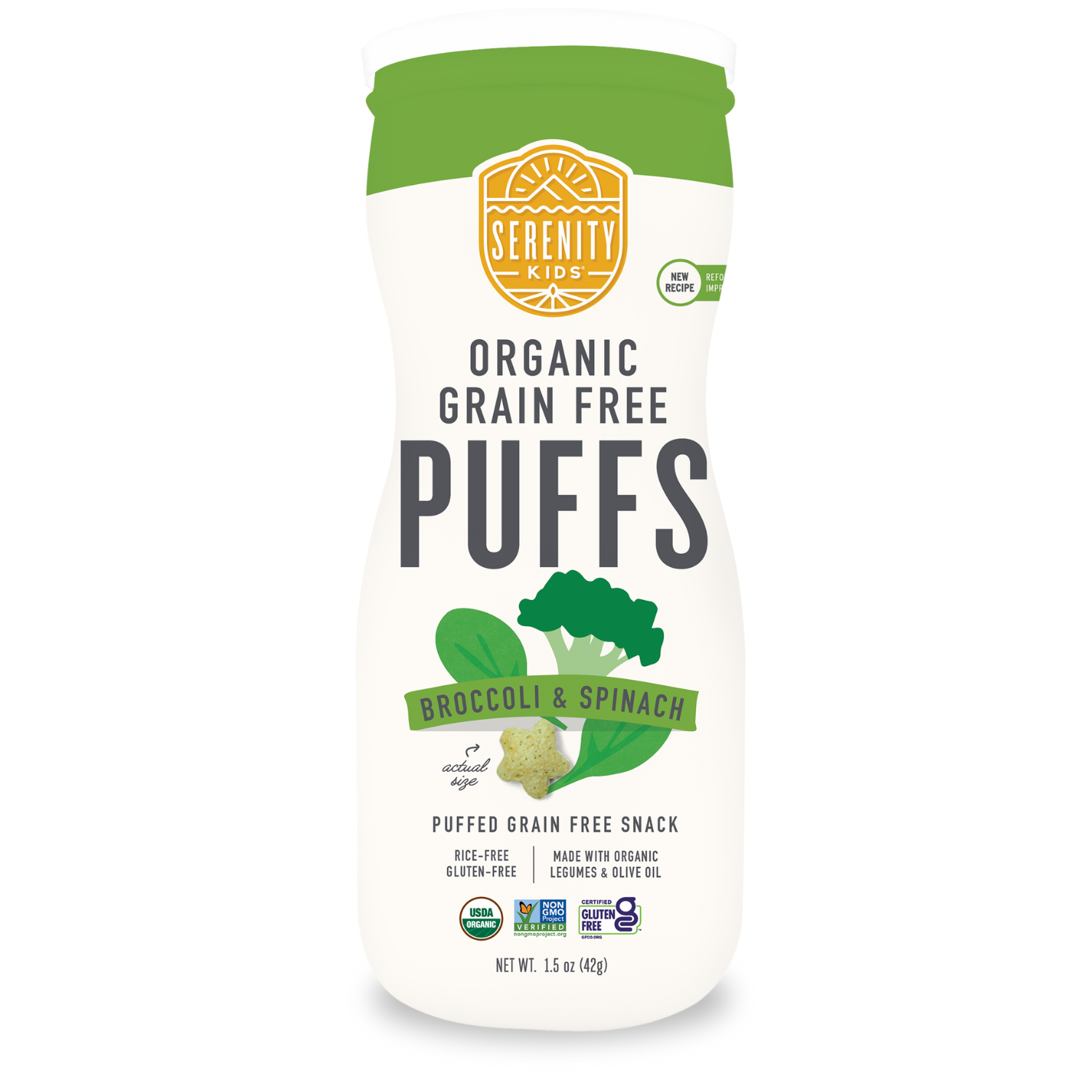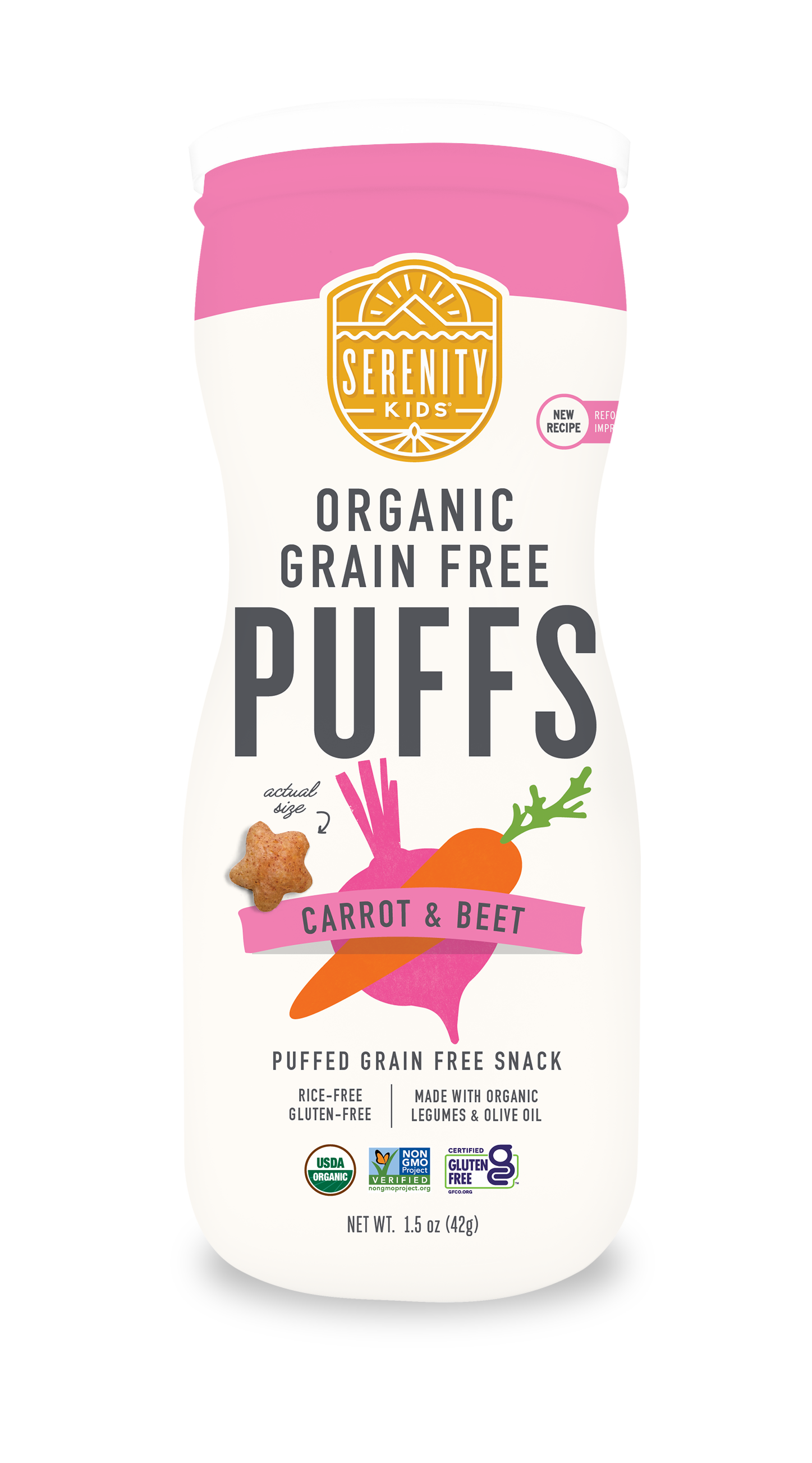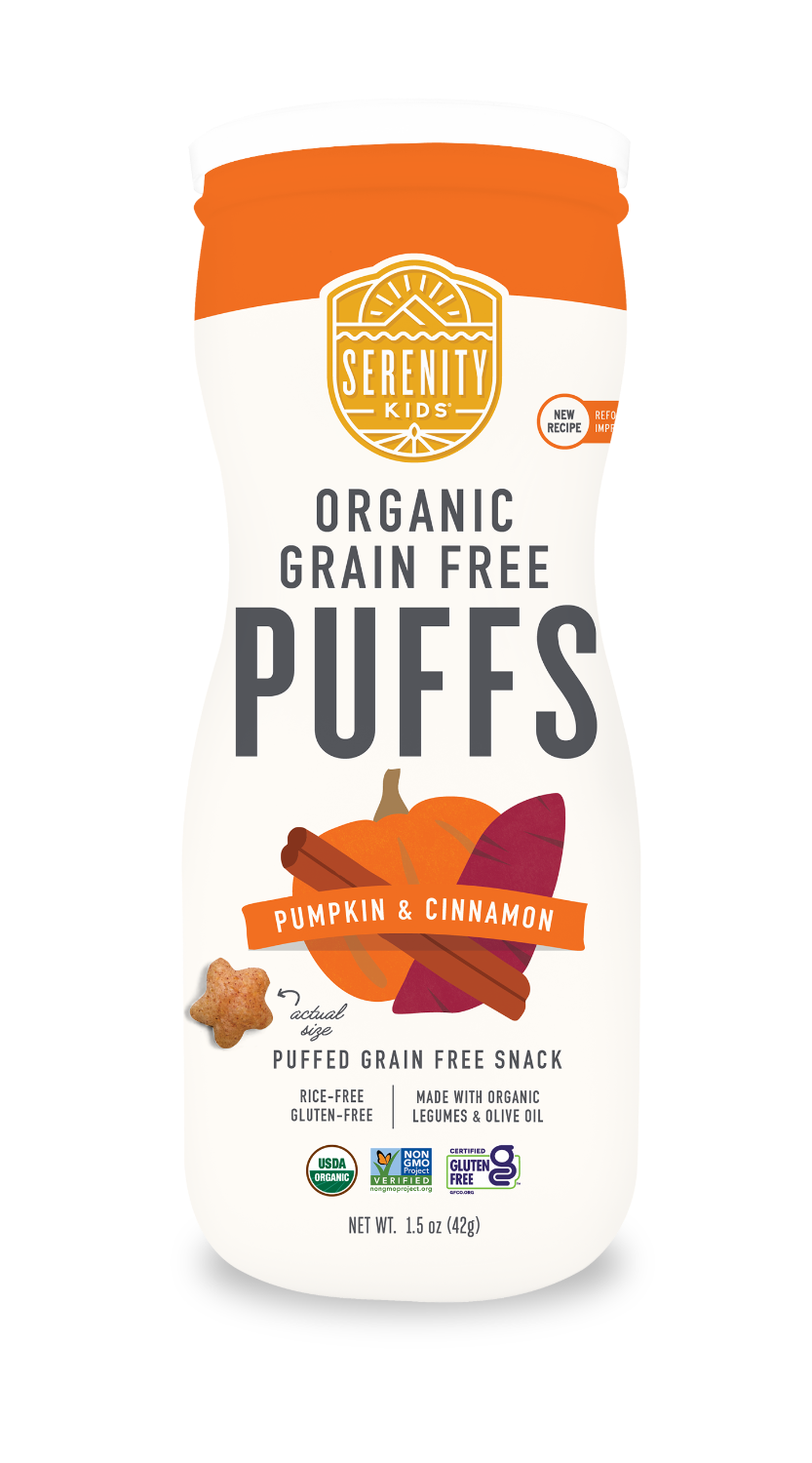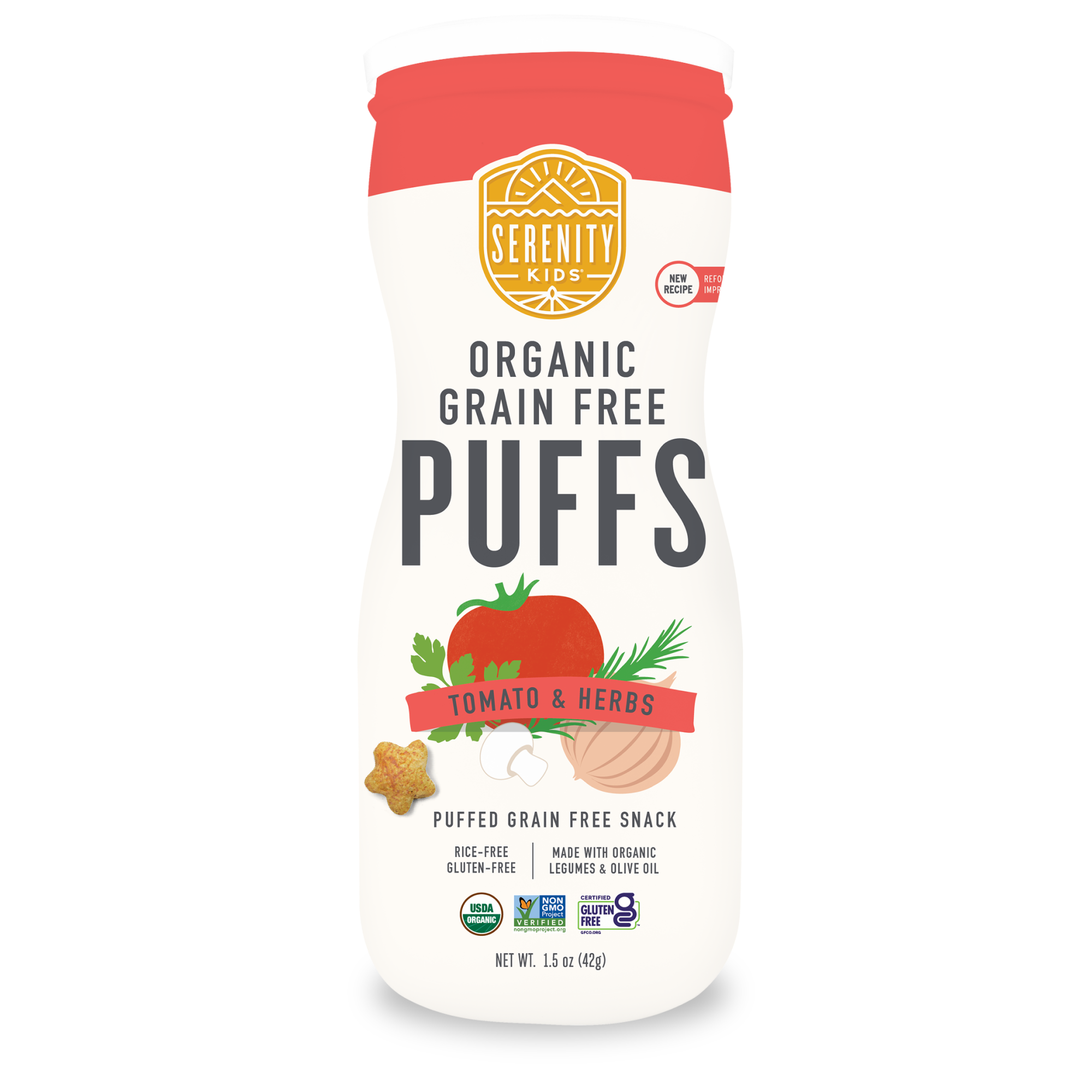Introducing solid food into a baby's diet is an exciting milestone! But it can also be tricky to know when to start, what foods to offer, and how to ensure that your little one is getting the nutrition they need.
One of the most common things that causes confusion is the listing of “baby food stages” on most commercially sold baby foods. But what do these “stages” actually mean, and do they even matter?
We at Serenity Kids have chosen not to list stages on our products because we found them too confusing, and instead encourage parents to use their best judgment about when to feed what foods to their kiddos. But since many other baby foods do list a stage, we thought we’d help you learn more about what is considered “stage 2 baby food,” including how to start, what to avoid, and the best Stage 2 baby food combinations.
Defining the Baby Food Stages:
Let's begin by defining what other baby foods mean when they list the various baby food stages, keeping in mind that these are not strict rules and every baby is unique in their development, so flexibility is key. Really any of these staged foods can be fed at any point once they begin solid foods, entirely up to the parent's discretion.
Stage 1: Intended for 6 months
Stage 1 baby foods are single-ingredient smooth purees. They contain just one food that has a very thin consistency. While some companies say they are intended for babies 4-6 months, we don't recommend starting foods before 6 months unless recommended by a health provider.
Stage 2: Intended for 7-8 months
Stage 2 foods are still pureed baby food but with a thicker texture and multiple ingredients. They may include thicker mashed foods and combinations made up of several different ingredients like meat and vegetables.
Stage 3: Intended for 9 to 12 months
Stage 3 baby food is typically a combination of puree with soft-cooked chunks of food. They might begin to introduce more complex flavor combinations like savory meat and veggies with herbs and spices. Though it may say “stage 3”, many parents choose to feed these foods at 6 months old at the beginning of the solid's journey.
Stage 4: after 12 months
Stage 4 baby food includes more typical table food or finger foods that are offered as small chunks for the baby to pick up. Note that you can certainly introduce this type of food earlier on. We are simply defining how store-bought baby foods are labeled.
What is the Difference Between Stage 1 and Stage 2 Baby Food?
Stage 1 and Stage 2 baby food are similar but other baby food companies define them differently. It's worth noting that these classifications are not strict timelines; 6-month-olds can have mashes, and older babies can eat more liquid foods.
Stage 1 baby food
Stage 1 baby food is very smooth and thin. It essentially has a liquid consistency, so it is easy to transition from breast milk or formula when starting solids.
Stage 2 baby food
Stage 2 baby food is labeled for infants aged 7 to 8 months. It is slightly thicker and may have more texture as it is strained or mashed.
How to Tell When Your Baby is Ready for Stage 2 Foods?
Normally, 7-8-month-old babies are ready for stage 2 baby food when they have demonstrated the ability to move food from the front of their mouth to the back. These are also the behaviors that indicate that they’re ready for any solid food. Other signs that babies are ready may include "pincer grasp", where they pick up food between their thumbs and index fingers or when they can comfortably swallow pureed food. Additionally, babies should be at least 6 months old before introducing any solid foods, like stage 2 foods.
What’s the Best Way to Introduce Stage 2 Baby Food?
Now that we know what stage 2 baby food is, let's explore how to start, what foods to include, and those to avoid.
What stage 2 baby food to start with
As you start introducing solids and choose to offer stage 2 baby food, we wanted to share some ideas. You can experiment with different combinations of the foods below. We love to cook and puree all of these foods with healthy fat and thin with bone broth as needed.
Puréed vegetables
Start with colorful vegetables like carrots, sweet potatoes, and peas. Steam or boil them until they're soft, then blend them into a smooth purée. These veggies are packed with essential nutrients.
Puréed meats
Introducing meats like chicken, turkey, or beef provides a good source of iron and protein for your growing baby. Cook and blend them into a consistency that's easy for your baby to swallow.
Pureed fruits
While fruits are delicious and nutritious, it's essential to maintain a balance between fruits, protein, fat, and veggies. Try lower-sugar fruits like berries, or serve alongside a fat or protein source to mix sweet and savory.
Egg yolks
Eggs are a fantastic source of protein and healthy fats. Ensure the yolk is cooked and mashed to a smooth texture.
Mashed avocado
Avocado is not only creamy and delicious but also rich in healthy fats and nutrients. Simply mash it up with a fork. Your baby will love it.
Bone broth
Bone broth is a nutrient powerhouse, especially when it's prepared with care. You can even make your own bone broth with liver following our recipe linked here.
Serenity Kids food pouches
When you are strapped for time, consider our Serenity Kids food pouches for convenient and nutritious options. We've designed them with your baby's health in mind, simple, clean and nutrient-dense ingredients that provide a variety of flavors to explore. All of our pouches would be considered stage 2 or 3 using that classification system.
How to Tell When Your Baby is Ready for Stage 2 Foods?
Normally, 7-8-month-old babies are ready for stage 2 baby food when they have demonstrated the ability to move food from the front of their mouth to the back. These are also the behaviors that indicate that they’re ready for any solid food. Other signs that babies are ready may include "pincer grasp", where they pick up food between their thumbs and index fingers or when they can comfortably swallow pureed food. Additionally, babies should be at least 6 months old before introducing any solid foods, like stage 2 foods.
11 Best Stage 2 Baby Food Combinations for Purée
Explore a variety of delicious purée combinations to delight your little one's taste buds and help to expand their palate during the flavor window.
Carrot, spinach, and basil purée
A classic combo purée that's rich in vitamins and a natural sweetness that babies love.
Chicken, peas, and carrots purée
Chicken provides a lean source of protein. Combine it with delicious veggies for a wholesome meal.
Butternut squash and spinach purée
Creamy and nutritious, butternut squash is a hit with babies while spinach adds additional nutrition. Added healthy fats support brain development and satiety. Find it here.
Pork and apple purée
Pork is a flavorful option that can be easily blended or mashed into a baby-friendly consistency.
Beef, kale, and sweet potato purée
Beef offers iron and protein. Opt for grass-fed for optimal nutrition and then slow cook and blend for a tender texture. Mixing beef with kale and sweet potato makes for a delicious combination.
Turkey, sweet potato, pumpkin and beet purée
Turkey is a lean protein source that is rich in nutrients. Cook it fully and then blend it for your baby. Try ours mixed with sweet potato, pumpkin, and beet. Or make your own with this recipe.
Avocado and greens purée
Avocado is creamy and packed with nutrients, making it an excellent addition to your baby's diet. Mix it with kale, zucchini, sweet potato, or any number of fruits and veggies for a flavor explosion.
Bison, squash, and spinach purée
Bison is a unique choice that's rich in protein and nutrients. We like to pair it with a root veggie and green leafy veggie. Try it here.
Carrot purée and bone broth
Carrots are naturally sweet and packed with vitamins - perfect for your little one's health! Mix our carrot purée with our organic bone broth to give a little boost of protein.
Salmon, beet, and butternut squash purée
Salmon provides essential omega-3 fatty acids and is a great way to introduce a unique flavor to your little one. Ensure it's well-cooked and mashed for your baby. We like to mix it with butternut squash and beet.
Bell pepper and beef purée
Bell peppers offer a burst of slightly sweet color and flavor, plus a nice boost of vitamin C. Check out our Ginger beef pouches with peas, bell pepper, and broccoli for an easy, nutritious meal.
Foods to avoid
While introducing stage 2 baby food, it's equally important to be aware of foods that are not suitable for your little one at this stage. Steer clear of the following foods:
Grains
Your baby's digestive system is still developing, and grains like rice can be hard to digest.
Nuts and seeds
Nuts and seeds are one of the common choking hazards and may not be easy for your baby to handle. Also, peanut-containing foods could pose an allergy risk.
Whole blueberries or whole grapes
Round foods present a choking hazard and are not appropriate for Stage 2 baby food. Opt for mashed or sliced fruits to reduce the risk of choking, but be mindful of the natural sugars hiding in fruits.
Larger chunks of food
Large pieces of food can be a choking hazard. Always ensure that food is appropriately sized and mashed to reduce the risk of choking.
Fruit juices
It's best to offer whole fruits rather than fruit juices, which can be higher in sugar. The American Academy of Pediatrics recommends no fruit juice for babies under one year of age.
Honey
Wait until after your baby's first birthday to introduce honey, as it may contain the bacteria that causes infant botulism in babies under age one.
Added Sugar, Candy, or Dessert
Though it can be tempting to give them “just a taste” of some “fun” foods, they are far from ideal for a baby in this critical growth window who is developing their palate.
Feeding Tips for “Stage 2” Baby Food
Make mealtime enjoyable for your little one with these helpful tips.
Add spices or seasoning to purée
As your baby's taste buds develop, consider adding mild spices or seasonings to their purées for added flavor.
Have a spare spoon (or two) handy
Encouraging your child to self-feed can start early! Let them experiment with a soft, plastic spoon for a head-start at independence, not to mention a bit of fun!
Combine purées with soft pieces of food
You can gradually introduce small, soft pieces of food to encourage self-feeding alongside purees.
Breast milk or formula consumption is still important but may decrease
While your baby explores solid foods, remember that breast milk or formula is still important for their nutrition. The transition to solid foods is gradual, so keep offering breast milk or formula.
How to Store Baby Purées?
Properly storing your freshly made purées is important in order to keep them safe and nutritious.
Shelf stable purées
Our Serenity Kids food pouches are real food, designed to be nutrient-dense and incredibly convenient. They can be safely stored in the pantry for up to 18 months until opened.
Refrigerator
For short-term storage, keep homemade purées in an airtight container in the refrigerator for up to 72 hours. Discard any that your baby has partially eaten if their spoon was dipped into it.
Freezer
If you prepare large batches of homemade purées, freezing them in silicone ice cube trays can be convenient. Simply thaw what you need when it's mealtime.
Takeaways
Introducing solids is an exciting step in your baby's culinary journey. It can be helpful to understand the guidelines for different stages while remembering that every baby is different. Trust your instincts, enjoy this precious time with your little one, and explore the delightful world of feeding your baby a diverse range of healthy foods from a variety of food groups. Make it even easier by signing up for our baby food subscription, crafted to support every stage of your baby’s growth. To know what experts think about our baby food, this Forbes Serenity Kids review could provide helpful insights.

